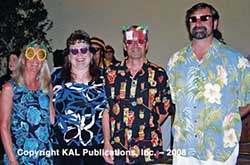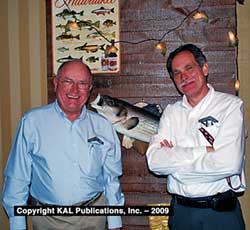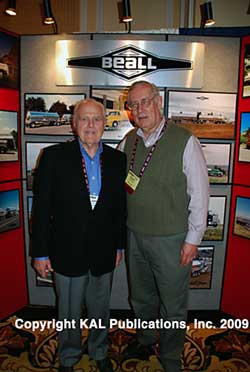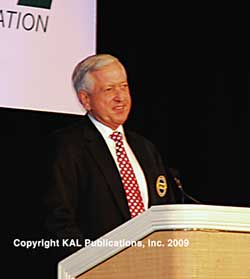

Pacific Oil Conference Winter Board of Directors Meeting



Western Petroleum Marketers Association Convention and Expo
Want to see the photos that didn't make the issue? Check out the Cutting Room Floor.
EVR Deadline May Force Thousands of Station
Closures
California Freezes UST Fund Payments
Beer Ban Lifted At Gilbert 7-Eleven
Pacific Ethanol Shutters Two Western Plants
UL Approves Use of E15 In Dispensers
Flying J Looks To Sell Longhorn Pipeline
LOS ANGELES, CA. — Service station owners and operators across California are wondering just how many stations will be shuttered in the state on April 1 when new Enhanced Vapor Recovery (EVR) regulations become effective.
"This is an environmental compliance train wreck that the California Air Resources Board (CARB) has known about for at least two years," said Jay McKeeman of the California Independent Oil Marketers Association. "They have done nothing and they continue to do nothing about their fundamentally flawed service station control program."
McKeeman continued, "One number that keeps coming up is up to half of the service stations in the state — or more — will not be in compliance by the April 1 deadline."
Under regulations passed by the California Environmental Protection Agency, approximately 11,000 stations in the California were required to upgrade their equipment to reduce gasoline vapor emissions. The minimum regulatory EVR requirements include a 95 percent collection efficiency of vehicle transfer emissions, while simultaneously controlling the vapor emissions of underground storage tanks. While the regulation was passed several years ago, CARB did not finalize the station owner requirements until six months ago.
The first difficulty with compliance with the regulation came from the equipment itself. The equipment had to be certified as acceptable for EVR by the California Air Resources Board and the certifications were not forthcoming. Until last October, only one equipment system was certified by CARB for use in EVR systems and today, only two systems are certified.
It is worth noting that other equipment systems have successfully passed the CARB tests but have not been issued the letter of certification by CARB, a situation that many believe is anti-competitive.
Equipment companies have not been the only ones unable to proceed with compliance because of government roadblocks. Service station owners and contractors have been reporting huge delays in receiving permits to upgrade their systems.
"I have permits that were filed in September that we haven't received yet," reported one Southern California station operator. "We're getting close to the wire now." He noted, "In one case, we had to pay permits, we got approvals from everyone from the Fire Department on down, and then I had to go pay and renew the permit applications because we still hadn't been issued one from the city."
"Plan checkers, especially in the building departments, don't have anything to do because of the economic slowdown," speculated one contractor. "So they're stretching everything out and looking at everything two or three times because they don't want to be laid off." He continued, "I've had plans kicked back to me because they said the detail wasn't on the plan and I had to go back and show them. It was right there. I had to go back and show them and they said 'oh, my mistake.' And the fees are unbelievable. Our fees were $13,000 in San Jose. I thought Beverly Hills are up there but San Jose beat them."
"We literally have a stack of job folders on my desk," said one Northern California contractor. "All they're waiting for is permits. And some have been waiting for more than half a year."
"Another number that is bandied around is the number of service stations that don't yet have a permit and that seems to be hovering around 30%," noted McKeeman. "I would guess over 1,000 service stations will probably be closed as of April 1st."
Despite the difficulties getting certified equipment and permits, the California EPA says that the deadline will remain in place, even though they acknowledge there are problems with the system. In an official "Policy for Service Stations That Do Not Meet The April 1, 2009 Phase II EVR Deadline," Cal-EPA notes that " it is expected that some gasoline dispensing facilities will miss the deadline for reasons beyond their control." They charge local air districts with the authority to allow stations to operate "temporarily" if they can show a good-faith effort to comply with the law. However, penalties will be levied on the stations and they "may escalate over time."
It is concerns over the high costs of equipment and installation as well as the threats of fines for non-compliance that are forcing many service station owners to choose to shut down their stations.
While this action is taking place in rural areas with low throughput, even urban stations are running the numbers and finding they don't add up. As of the end of December 2008, the South Coast Air Quality Management District reported that had heard back from 3,109 of their 4,500 sites about EVR Phase II upgrades. Seventy-six stations said they planned to shut down on April 1, 2009 rather than upgrade their sites.
California State Senator Ron Calderon (D-Montebello) has begun a campaign to extend the deadline for a year. He noted that several stations in his district would be forced to close down if the April 1st deadline remains on the books. "We're talking about small business men and women, independent owners, not deep-pocket oil companies" said Calderon. "Don't let the huge profits posted by the likes of Exxon fool you, these folks earn a very small margin of profit from the gas they sell. Most of them can't come up with the cost of compliance in such a short time frame. Not in this economy. Unless you've been on Mars for the last year, you know credit is very hard to come by.
"CARB is being unreasonable and foolish," Calderon continued. "If most of these gas stations are forced to close, CARB will be defeating its own environmental purpose, by forcing drivers to go farther outside their own communities to get gas."
"I've given up trying to predict on this thing" said McKeeman. "I think once the fuel consumer gets pissed off and thousands of voices instead of hundreds of voices are heard, they may do something."
SACRAMENTO, CA. — As part of the fallout from California's budget troubles, the state has announced that they will no longer provide any payments from their UST fund to help with tank contamination cleanups.
The state says it is currently funding 4,200 active claims and has suspended 1,356 of its Letter of Commitments.
At the same time, the state of California will continue to collect a fee of 1.4 cents for every gallon of petroleum products placed into USTs in the state. The State Board of Equalization collects the fee quarterly from owners of USTs but says its revenues have declined in recent months "due to higher gas prices and the overall economic decline resulting in fewer gallons of gas being sold."
California collected $245 million in UST fees in the fiscal year ending August 2008 and is projecting a collection of fees of $230 million for fiscal year 2009, a drop of only 7% in revenue.
However, the state spends 13.23% of the income — or $32.4 million in 2008 — on administration, overhead, and oversight of the program which is now being suspended.
The cut-off of state cleanup funds may last over two years. However, during that time, station owners "are still responsible for complying with any regulatory directives/time schedule orders by the UST local oversight program," according to Ronald Duff, manager of the UST fund for the state.
The state estimates the average cost of a UST cleanup in California at approximately $58,000; of that total, owners had been paying approximately $10,000. With the suspension of the fund, owners will be liable for the entire amount.
Duff also noted that for sites that are not already on the fund priority list "it is unlikely that funds will be available for several years."
"We've got a big problem here and not a whole lot of answers," said Jay McKeeman of the California Independent Oil Marketers Association. "Some marketers are looking at a bankruptcy filing as one option if they have to pay hundreds of thousands of dollars in ongoing cleanup costs."
GILBERT, AZ. — The city's Planning Commission has voted to allow a 7-Eleven convenience store to sell single cans and bottles of beer, lifting a 10-plus year ban.
The convenience store, located at Elliott and Cooper Roads, was prohibited from selling adult magazines, hard liquor, the single cans and bottles of beer, or putting in an outside pay phone when the City of Gilbert approved its permit over a decade ago. The town officials also required the convenience store play classical music on the weekends in an effort to keep teenagers from hanging out at the store.
After operating under these restrictions, owner Carol Ripsam said, "I thought, we've been here 10 years. Maybe we can get this one restriction lifted."
Speaking on her behalf during the hearing, Planning Commission member John Sentz said the single beer ban put Ripsam's store at a "complete disadvantage." There are 11 convenience stores within a 1.5 mile radius of the Gilbert 7-Eleven that are allowed to sell single cans and bottles of beer.
In reversing their regulations, Commissioners praised the store for its positive presence in the community and for consistently complying with all restrictions even when nearby stores had no such limitations.
Ripsam said that she is not going to ask to overturn the other restrictions on her 7-Eleven store. She said that she plays classical music every day at the store, not just on the weekends, because "A lot of people come in and say it's so soothing."
STOCKTON, CA. — Pacific Ethanol, Inc. "temporarily suspended operations" at the company's 60 million gallon-per-year ethanol facilities in Burley, ID., and Stockton, CA.
The alternative fuel refiner decided to shutter the plants "due to extended unfavorable market conditions for producing ethanol."
Pacific Ethanol had already suspended operations on Jan. 12 at its 40 million gallon per year production facility in Madera, CA.
The company said it plans to continue supplying ethanol to its customers through its ethanol marketing arm, Kinergy Marketing, with supply from other Pacific Ethanol plants and Kinergy suppliers.
Pacific Ethanol is still operating its ethanol plant in Boardman, OR., and owns a 42 percent interest in Front Range Energy, LLC which owns an ethanol plant in Windsor, CO.
Underwriters Laboratories (UL) has announced that it supports government authorities who permit legacy system dispensers listed to UL 87 and currently installed in the market, to be used with fuel blends containing a maximum ethanol content of 15 percent.
This is an issue because of the National Ethanol Renewable Fuels mandate. Under this law, refiners are obligated to increase the volume of ethanol blended into gasoline by one billion gallons per year.
Because of the decrease in gasoline consumption while the percentage of ethanol being blended steadily increases refiners will be blending at levels over 10% within the next year. However, most engines — including those in passenger cars — and service station equipment are only designed to run effectively on blends of E10 or less.
"Refiners don't have enough gallons to blend into," explained Dan Gilligan of the Petroleum Marketers Association of America. "It's a wall refiners are probably going to hit next year. I think it's safe to assume that the country is going to move to a higher blend. An E15 blend may be the only solution.
"This creates problems for marketers," Gilligan continued. "First of all, equipment is certified for E10, not E15. This includes dispensers, pumps, and vehicles. We're not sure our USTs can adequately handle E15. Some of our tanks struggle with E10. Second, we need liability protection against engine failures, especially small engines like chain saws and snowmobiles. "
The announcement by UL is the first step toward solving the problem created by conflicting regulations: the Renewable Fuels mandate that increases the amount of ethanol in fuel above 10% and the fact that the petroleum equipment is not certified to store to dispense fuel with ethanol above 10%.
UL researchers found that using equipment certified to UL 87 to dispense ethanol blends up to 15% should not result in critical safety concerns.
However, the company stressed that dispensers pumping this higher percentage of ethanol should be "subject to regular inspection and preventative maintenance" because the potential for degradation of the metals and materials used in a dispensing system increases as the percentage of ethanol increases.
"UL determined that there is no significant incremental risk of damage between E10 and fuels with a maximum of 15 percent ethanol. This conclusion was reached after careful examination of the effects of varying levels of ethanol on components," said John Drengenberg, Consumer Affairs Manager for UL. "We will continue to evaluate test and field findings, as well as the scientific literature, as it becomes available and make this information available" to local regulatory and approval entities.
"The simple answer for Congress would be to freeze the ethanol mandate at 10 billion gallons," noted Gilligan. "The problem is the ethanol industry has the votes to block any change in the mandate."
OGDEN, UT. — Flying J Inc. has announced that it is seeking a buyer for its Longhorn Pipeline and associated companies.
The Longhorn Pipeline carries refined products from Houston, TX., to Crane and El Paso, Texas.
The company is selling the pipeline, which was only placed into service in 2005, to raise money following its Chapter 11 filing in December.
Aegis Energy Advisors Corp. and The Blackstone Group are assisting Longhorn Pipeline with the potential sale
Originally published in the April 2009 issue of O&A Marketing News.
Copyright 2009 by KAL Publications Inc.
Serving the 13 Western States, the World's Largest Gasoline, Oil, Fuel, TBA and Automotive Service Market